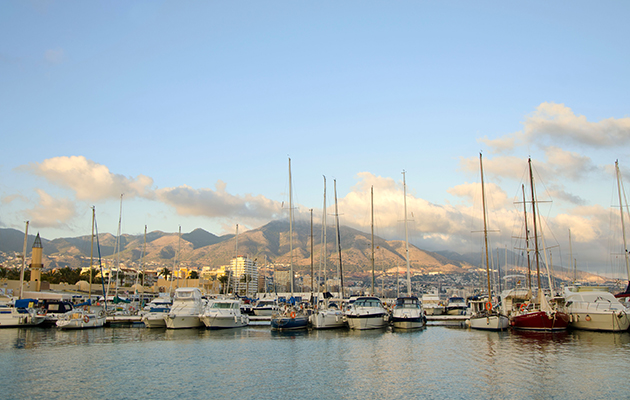There is a strong tidal stream. Would you set off on a port or starboard tack? James Stevens answers your questions of seamanship
Do I choose port or starboard tack?
James Stevens answers your Questions of Seamanship.
Question:
Tom is the owner of High Pressure, a 10m cruiser racer with a symmetric spinnaker.
He has sailed dinghies for years but has just purchased his first yacht.
Tom is very experienced with spinnakers when dinghy racing but he lacks the same knowledge when it come to navigation.
He has three crew and is currently approaching the Needles, intending to sail to Cherbourg, which is 60 miles to the south.
The internet is telling Tom that the wind at the Needles is 15 knots at 000º, true north. The trip is therefore directly downwind.

Credit: Maxine Heath
Tom knows that when sailing with the spinnaker, the best velocity made good is about 120° to 130° from the true wind direction as measured by the boat’s instruments.
He knows that in gusts he can bear away and sail deeper as the speed increases and apparent wind changes.
In the current conditions High Pressure should sail at about 8 knots depending on sea state.
There is a spring tide with tidal streams more than 4 knots on both sides of the Channel.
The stream is flowing to the west for the next three hours.
When he arrives at the Needles does he set off on a starboard or port tack? Does it make a difference?
Answer:
The boat under way in a tidal stream will experience a different wind direction to that recorded by a shore station.
On board, with a four-knot west-going tide the tide-induced wind will back to about 345° and increase to 15.5 knots.
If there was calm at the shore station, a yacht under way in that tidal stream would experience a four-knot westerly wind.
Continues below…
The UK’s 11 fiercest tide races
Breaking waves and lurking rocks have earned some British tidal races a fearsome reputation. Dag Pike explains how to navigate…
What are the rules to wear a blue ensign?
Do you know the rules for wearing a blue ensign? Do you know who is entitled to wear a privileged…
How would you tackle this windward berth?
James Stevens answers your questions of seamanship - this month, with no working bow thruster what is the best way…
How to sail to France from the UK
For home-waters sailors who are considering a holiday cruise to France, Ken Endean looks at the options for making a…
The boat’s instruments measure the wind blowing across the boat, which they refer to as apparent wind, which includes the tide-induced element, as well as the boat’s course and speed.
The tide-induced wind changes with the change in strength and direction of the tidal stream.
When the stream turns to the east the tide-induced wind will veer, in this case, to about 015° and 15.5 knots.

James Stevens, author of the Yachtmaster Handbook, spent 10 of his 23 years at the RYA as Training Manager and Yachtmaster Chief Examiner
This wind shift makes a big difference to the navigation.
When the tidal stream is flowing towards the west, Tom’s heading on starboard tack in a wind direction of 345° will be much better for Cherbourg than if he sets off on port.
Although the tide is on the lee side, it is on the quarter, so will increase the speed of the yacht over the ground pushing it a long way to the west.
Tom needs to keep an eye on this and time the gybe so that he can stay on a fast point of sail all the way to Cherbourg, while making maximum use of the tide and the wind shifts.
A lot depends on how fast Tom sails the boat, how deep he sails in the gusts, the sea state and how well the crew concentrate, so it is difficult to predict the course accurately or predict the exact position of the gybe.
Enjoyed reading Do I choose port or starboard tack?
A subscription to Yachting Monthly magazine costs around 40% less than the cover price.
Print and digital editions are available through Magazines Direct – where you can also find the latest deals.
YM is packed with information to help you get the most from your time on the water.
-
-
- Take your seamanship to the next level with tips, advice and skills from our experts
- Impartial in-depth reviews of the latest yachts and equipment
- Cruising guides to help you reach those dream destinations
-
Follow us on Facebook, Twitter and Instagram.








